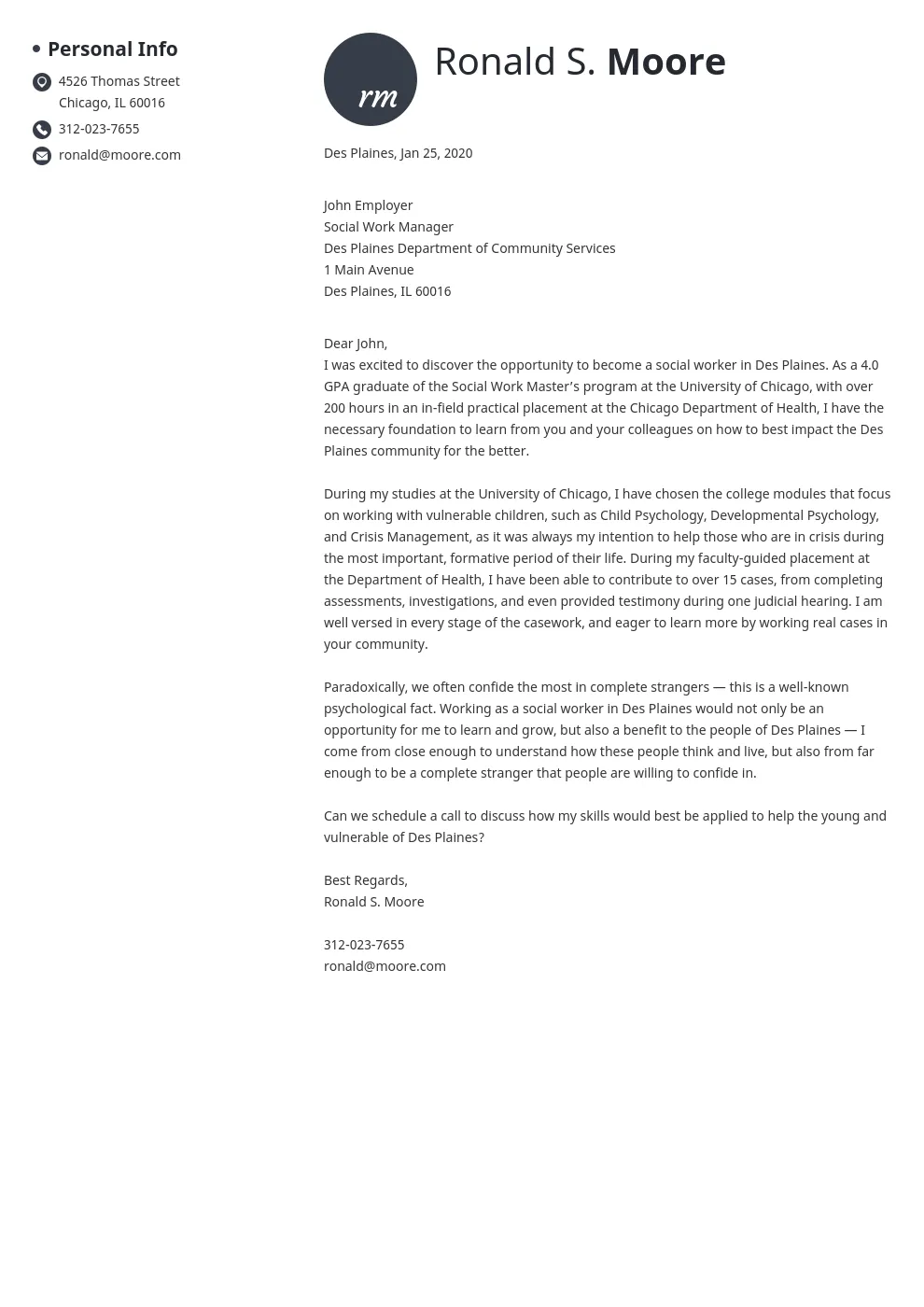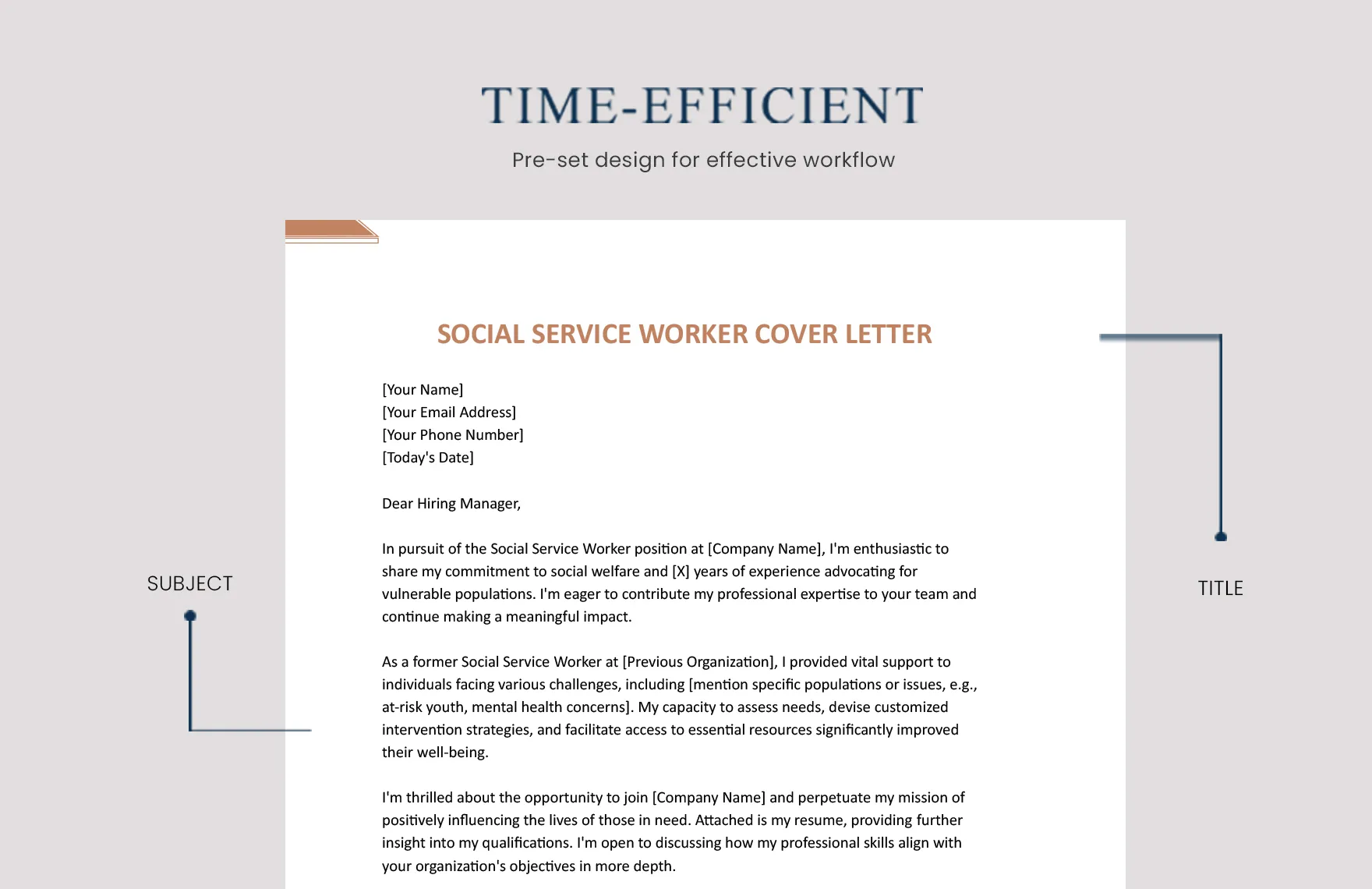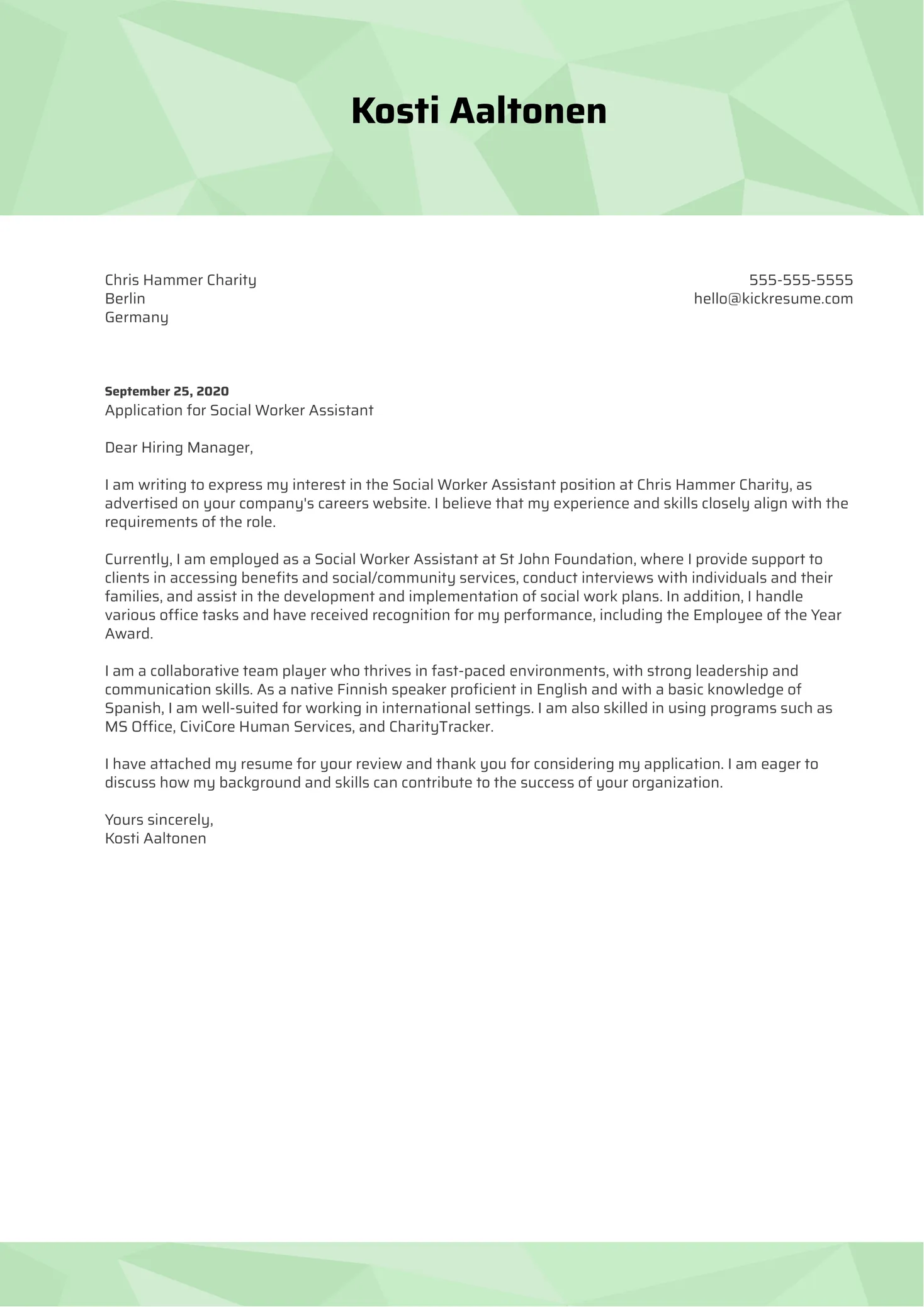Why You Need a Great Social Service Cover Letter
In the competitive field of social services, a well-crafted cover letter can be your golden ticket to landing your dream job. A strong cover letter serves as your first impression, a vital tool that goes beyond the resume to showcase your passion, skills, and understanding of the specific role you’re applying for. It is your chance to connect with the hiring manager on a personal level, demonstrating your genuine interest in the organization and the impact you aim to make. A compelling cover letter sets you apart from other applicants who might have similar qualifications. It provides a space to highlight relevant experience, explain career goals, and align your values with the mission of the social service agency. By taking the time to write a thoughtful and targeted cover letter, you increase your chances of securing an interview and ultimately getting the job.
Understand the Purpose of a Cover Letter
The primary purpose of a cover letter is to introduce yourself and express your interest in a specific job. It’s not just a repetition of your resume; it’s an opportunity to tell a story. It allows you to delve deeper into the skills and experiences mentioned in your resume, providing context and showcasing how they relate to the job’s requirements. Your cover letter should clearly articulate why you are the perfect fit for the role and the organization. It gives you a chance to showcase your writing skills, communication abilities, and personality, making a memorable and positive impression. A cover letter highlights your unique value proposition. It should also demonstrate that you have researched the organization, understand its mission, and are genuinely excited about the opportunity to contribute to its goals. By addressing the hiring manager directly and personalizing your letter, you build a connection, making your application stand out.
Key Components of a Cover Letter

A well-structured cover letter includes several essential components that work together to make a strong impression. The header should include your contact information (name, phone number, email, and professional social media profiles if relevant) and the date. Next comes the salutation, addressing the hiring manager by name whenever possible. The introduction should immediately grab the reader’s attention, state the position you’re applying for, and briefly explain why you are interested. In the body paragraphs, you should highlight your relevant skills, experience, and achievements, tailoring them to the job description. Finally, the conclusion should reaffirm your interest, summarize your key qualifications, and include a call to action, such as requesting an interview. These components, when combined with a professional tone and clear writing, ensure your cover letter leaves a lasting positive impression.
How to Structure Your Social Service Cover Letter
Header and Contact Information
Your cover letter’s header sets the tone for your application, so it’s crucial to get it right. Start with your full name, followed by your phone number, professional email address, and, optionally, links to your LinkedIn profile or professional website. Ensure that your contact information is current and easily accessible. Place this section at the top left or right of the page, followed by the date. Next, include the hiring manager’s name (if known), their title, and the organization’s address. If you’re unsure of the hiring manager’s name, you can search the company website or LinkedIn, or use a general greeting like ‘Dear Hiring Manager.’ Proper formatting here showcases your attention to detail and professionalism.
The Introduction Start Strong

The introduction is your first opportunity to capture the hiring manager’s attention, so it’s vital to start strong. Begin by stating the specific position you are applying for and where you saw the job posting. Then, briefly explain why you are interested in the role and the organization. Consider including a brief statement that reflects your enthusiasm for the social service field. You can also mention a relevant achievement or skill that immediately captures the reader’s interest. Avoid generic opening statements; instead, aim for a personalized approach that demonstrates your genuine interest and enthusiasm for the opportunity. Make sure your introduction is concise, engaging, and sets the stage for the rest of your cover letter. Always proofread the introduction to ensure it is free from grammatical errors and clearly conveys your intent.
Body Paragraphs Highlighting Skills and Experience
The body paragraphs are the core of your cover letter, where you demonstrate how your skills and experience align with the job requirements. Begin by reviewing the job description carefully and identifying the key skills and qualifications the employer is seeking. In your body paragraphs, highlight your relevant experiences and how they prepared you for the role. Use specific examples to illustrate your skills, such as specific projects, volunteer work, or previous jobs. Quantify your achievements whenever possible; for example, mention how you increased client engagement by a certain percentage or successfully managed a specific budget. Tailor each paragraph to address specific aspects of the job description, showcasing your knowledge and understanding of the role. Make sure the tone is professional, and the writing is clear and concise, making it easy for the reader to understand your qualifications.
Tailoring to the Job Description
To effectively tailor your cover letter, start by thoroughly analyzing the job description. Identify the key skills, experiences, and qualifications the employer is seeking. Then, compare these requirements with your own skills and experiences. When writing your body paragraphs, focus on showcasing how your qualifications align with the specific needs of the role. Use the same keywords and phrases used in the job description to demonstrate that you understand what the employer is looking for. Provide specific examples of how you have used your skills in previous roles to achieve positive outcomes. This targeted approach ensures your cover letter is relevant and demonstrates that you have the right experience and expertise for the job. Proofread the letter to ensure that all relevant information is included and there are no discrepancies between your application and the job description.
Quantifying Achievements

Quantifying your achievements is a powerful way to demonstrate your impact and make your cover letter more compelling. Instead of simply stating your responsibilities, provide specific examples of your accomplishments and the results you achieved. For instance, instead of saying, ‘Managed a caseload of clients,’ you could write, ‘Managed a caseload of 50 clients, providing individualized support and achieving a 90% client satisfaction rate.’ Use numbers, percentages, and specific metrics to showcase your accomplishments. This approach provides concrete evidence of your abilities and allows the hiring manager to easily assess your value. When quantifying your achievements, be sure your information is accurate and relevant to the job requirements. Focus on the most significant accomplishments to leave a lasting impression. Quantifying your achievements in the cover letter provides credibility and shows you are a results-oriented candidate.
The Conclusion Making a Call to Action
The conclusion of your cover letter should reaffirm your interest in the position and the organization, summarizing your key qualifications and reiterating your enthusiasm. Briefly restate why you are a good fit for the role and how your skills and experience align with the job requirements. Then, end with a clear call to action, such as requesting an interview. Make sure to thank the hiring manager for their time and consideration. Provide your contact information again if needed, and make sure that your closing is professional and reflects your enthusiasm. A strong conclusion leaves the reader with a positive impression and encourages them to take the next step in the hiring process. Always proofread your conclusion for any typos or errors, and ensure that your closing aligns with the overall tone of your cover letter.
Formatting and Design of Your Cover Letter
Font and Readability

The font and readability of your cover letter play a crucial role in how it is perceived by the hiring manager. Choose a professional and easy-to-read font, such as Times New Roman, Arial, or Calibri. Keep the font size between 10 and 12 points for optimal readability. Ensure the text is well-spaced with sufficient line spacing to make it visually appealing. Use a clear and concise writing style, avoiding jargon and overly complex sentence structures. Break up large blocks of text with bullet points, subheadings, and short paragraphs to enhance readability. The use of white space is also crucial; avoid overcrowding the page. Proper formatting enhances the reader’s experience, making your cover letter more accessible and engaging. A well-formatted cover letter is more likely to be read and remembered, making a positive impression.
Length and Layout
Your cover letter should be concise and well-organized to capture the reader’s attention. Aim for a length of one page, unless specifically instructed otherwise. Use a standard business letter format with margins of approximately one inch. Start with your contact information, date, and the hiring manager’s details. Divide the letter into logical sections: introduction, body paragraphs, and conclusion. Within the body paragraphs, use subheadings to make it easier for the reader to scan the content. Ensure your layout is clean, uncluttered, and visually appealing. Use bullet points to highlight key skills or achievements. Proper formatting and a well-structured layout make your cover letter easy to read and show that you are organized and detail-oriented. This enhances your credibility and increases the chances of getting an interview.
Proofreading and Editing for Perfection
Proofreading and editing are critical steps in the cover letter writing process. Before submitting your application, carefully proofread your letter for any grammatical errors, typos, and punctuation mistakes. Ensure the spelling is correct throughout the entire letter. Read your cover letter aloud to check for awkward phrasing or unclear sentences. It is also a good idea to have a friend or colleague review your cover letter for feedback. They can identify any mistakes that you may have missed. Verify that the formatting is consistent and professional. The attention to detail demonstrated through careful proofreading and editing reflects your professionalism and commitment to quality, which is important in the social service field. Make sure your cover letter is polished, clear, and error-free before submitting it to a prospective employer.
